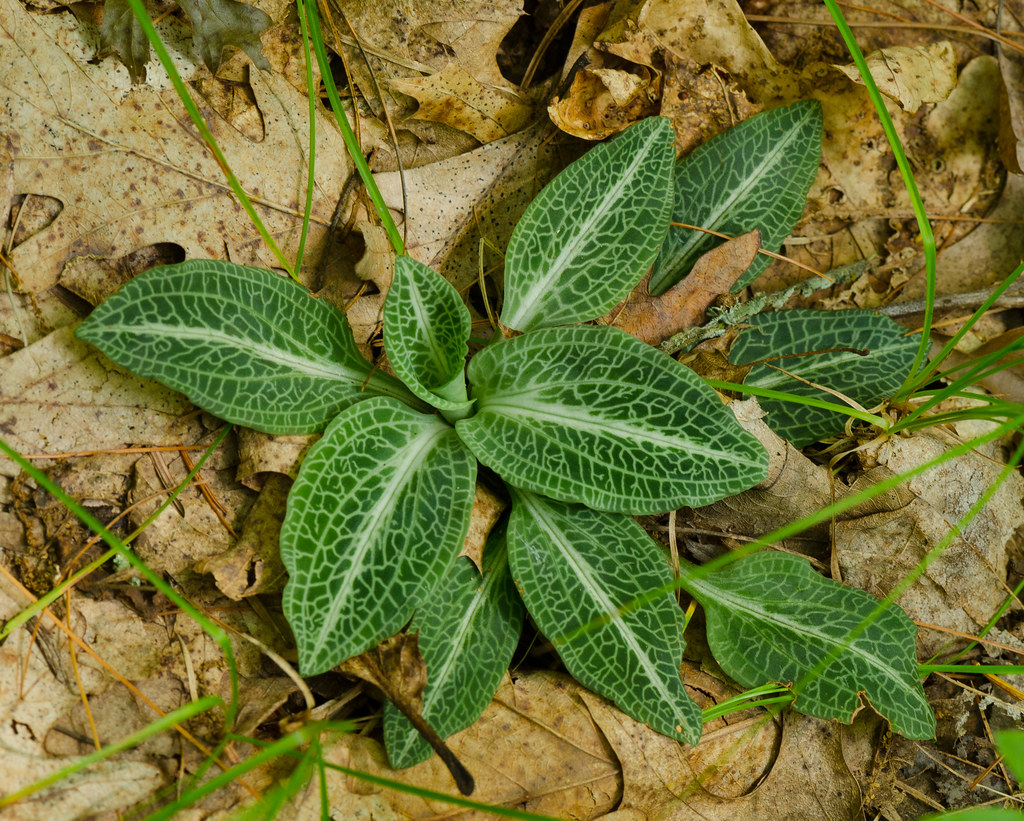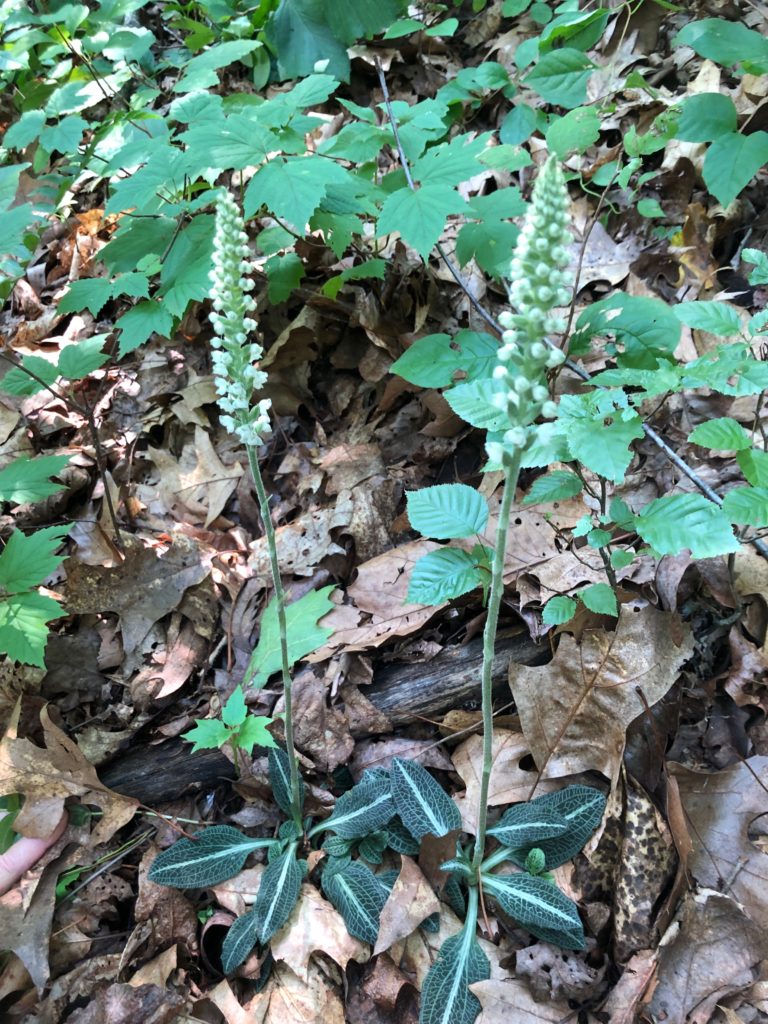
What’s In Bloom | Downy Rattlesnake Plantain
- Downy Rattlesnake Plantain (Goodyera pubescens) is an evergreen woodland orchid native to the eastern half of the United States and Canada.
- Has beautiful, ground-level leaves with unique white veining.
- Got its common name from its rattlesnake skin-like leaf pattern, its leaf arrangement similar to unrelated plantains, and its down-covered flower stalk.
Downy Rattlesnake Plantain (Goodyera pubescens) is a woodland orchid native to the eastern half of the United States and Canada. It has evergreen, ovate, blue-green leaves with a central white stripe and a complex-looking network of white veins. Leaves can grow up to 3 inches long, and form a basal rosette low to the ground. After becoming established, a leafless, down-covered stalk rises up to 20 inches from the rosette’s center for 3-4 weeks between July and mid-September. 30-50 tiny, whitish flowers form a cylindrical raceme on the upper quarter of the flower stalk. Each flower is up to ¼ inch long, slightly hairy, and 3-petaled, with a sac-like lower lip and light-green sepals. Flowers are followed by erect, ovoid fruit capsules; seedheads may persist to the following season. After going to seed, the plant’s rhizome forms 2-3 clonal offsets before dying. It prefers to grow in part- to full-shade, dry- to average-soils.

Downy Rattlesnake Plantain got its common name because its white leaf markings resemble the skin of some rattlesnakes, its leaf rosette is similar to the leaf arrangement on some unrelated plantains, and the plant, particularly its flower stalks, is covered in down.
Historically, the leaves were used to make an appetite-improving tea, which also helped with colds and kidney ailments.
Unfortunately, it has been overharvested for use in terraria due to its unique leaf patterns. This practice is highly unsustainable and can decimate local populations.
Benefits to biodiversity | Downy Rattlesnake Plantain is cross-pollinated by bumblebees and green metallic bees.